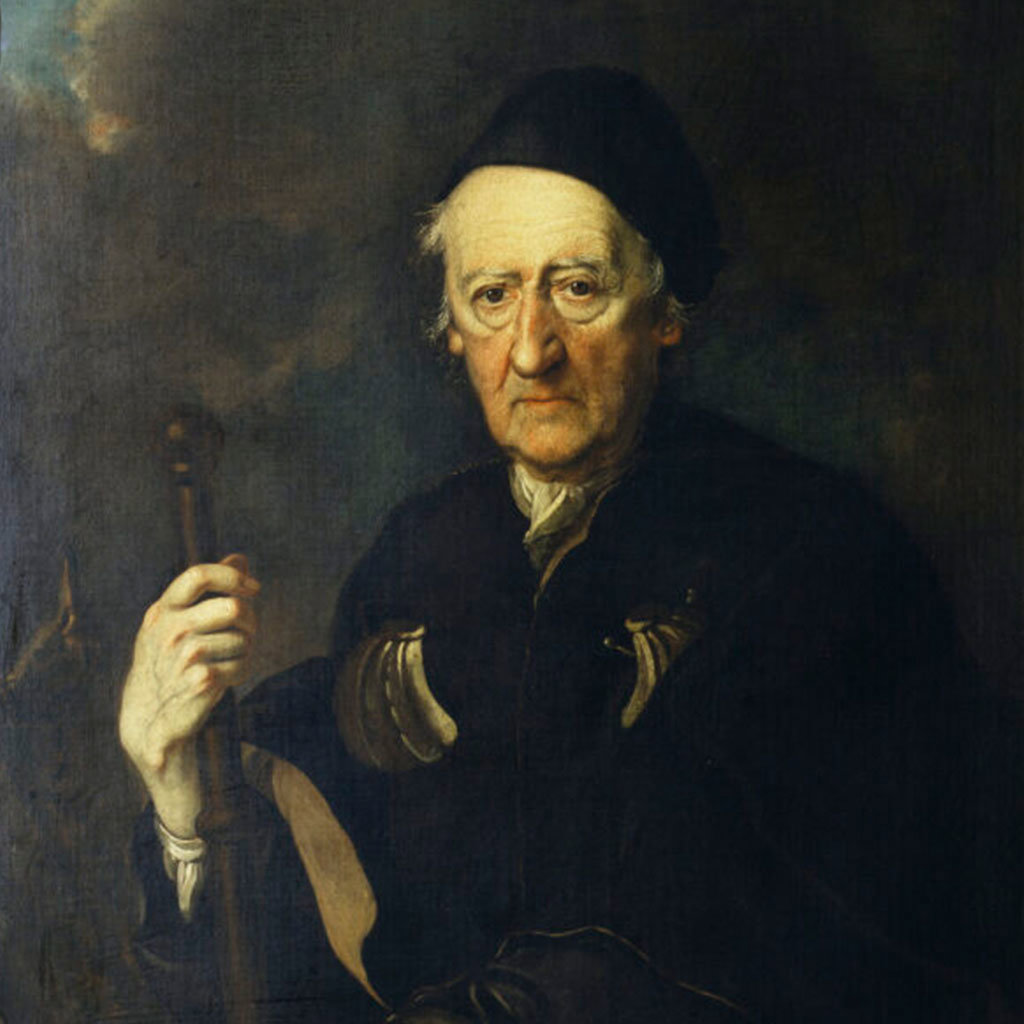James Bruce (1730-1794), an aristocrat who dabbled in antiquarianism, espionage, diplomacy, and surveying, travelled extensively in northern and eastern Africa, confirming the source of the Blue Nile in Lake Tana.
In this portrait, Bruce wears a traveller’s garb and clutches a scroll with the inscription, ‘Siste, viator, flex,’ or, ‘Stop, traveller, [and] reflect’. His travels, which included disguising himself as a Muslim at times, are typical of Enlightenment-era exploration, where the goal of the acquisition of knowledge often obscured competing political and economic motives.
Journey to Abyssinia and the source of the Nile
Bruce first became interested in Abyssinia, a Christian kingdom in East Africa, upon reading Job Ludolf’s History of Ethiopia (1681) while on a European tour after the death of his first wife. Soon thereafter, in 1758, Bruce gained the post of consul-general at Algiers, which he quickly lost due to ineptitude.
Accompanied by Luigi Balugani, an artist from Bologna, Bruce set out to visit and record ruins and archaeological sites in Algiers, Tunis, Tripoli, and Benghazi.
After recovering from fever in Aleppo, Bruce used his considerable network of European contacts, which included the French naturalist the Comte de Buffon, to resupply him for a trip to discover the source of the Nile in Abyssinia.
Unsanctioned exploration
Unlike other exploratory ventures, for example the contemporary naval expeditions to the Pacific, this trip was not officially sanctioned. To gain passage, Bruce applied for firmans, or written permissions, to enable travel and also donned the disguise of a fakir, or wandering religious ascetic.
While awaiting permission to enter Abyssinia from Ras Michael Sehul of Tigre, he posed as a Syrian physician. This exploratory effort foundered on the shoals of local diplomacy, however.

Unlike other exploratory ventures, for example the contemporary naval expeditions to the Pacific, this trip was not officially sanctioned. To gain passage, Bruce applied for firmans, or written permissions, to enable travel and also donned the disguise of a fakir, or wandering religious ascetic.
While awaiting permission to enter Abyssinia from Ras Michael Sehul of Tigre, he posed as a Syrian physician. This exploratory effort foundered on the shoals of local diplomacy, however.
Undeterred, Bruce and Balugani set out again in October 1770, reaching the Gish and therefore sourcing a tributary of the Blue Nile. Bruce quickly realised that he was not the first European to visit Gish, however. The Jesuit priest Pedro Paez had preceded him in 1618.
Worse, on the return journey, Bruce saw the confluence of the Blue Nile with the larger White Nile. The source of the White Nile remained a geographic mystery to Europeans for another century.
Controversy and scepticism
On the return trip, Balugani died. Bruce would later back-date Balugani’s death to make himself the main and only actor of his adventures. At the end of 1771, Bruce left Abyssinia for Scotland, weighed down with specimens, journals, and maps – all the accoutrements of an Enlightenment explorer. Most importantly for future scholarship, he carried the apocryphal book of Enoch, an Ethiopic text which he presented to the Bodleian Library.
Bruce chose a cross-desert journey to Egypt, then a voyage to Marseilles and an Italian tour before finally returning to Britain in June 1774. Educated society celebrated his travels, taking the limelight from Joseph Banks and James Cook, themselves just returned from the Pacific.
Applause quickly turned to scepticism, however, as many contemporaries struggled to believe Bruce’s observations. The flood of new knowledge that reached Europe in the eighteenth-century meant that travel stories had a hungry, but also discerning, audience to satisfy. Some suspicion continued even after Bruce published his popular account of the trip in 1790.
Further readings
Bourguet, Marie-Noëlle. ‘The Explorer.’ In Enlightenment Portraits, edited by Michel Vovelle and translated by Lydia G. Cochrane, 257-315. Chicago: University of Chicago Press, 1997.
Leask, Nigel. "Bruce, James, of Kinnaird (1730–1794), traveller in Africa." Oxford Dictionary of National Biography.
Mitsein, Rebekah. '"Come and triumph with your Don Quixote": or, how James Bruce travelled to discover the Nile but found Scotland instead.’ Studies in Travel Writing 18, no. 1 (2014): 1-17.
Van Wyk Smith, Malvern. ‘‘Would the real James Bruce please stand up?’ Bruce's Travels to discover the sources of the Nile (1790) in Alexander Murray's edition of 1813.’ English Academy Review: A Journal of English Studies 23, no. 1 (2006): 59-83.
